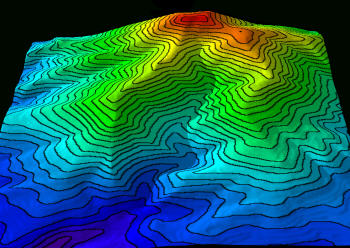Visualizing Topography

| Worksheets for this MP4 Version of the website | This link leads to a pdf document containing the worksheets that students fill out while exploring the new MP4 version of the website, via the link above. If an instructor wants a Word version of this worksheet to make modifications, email Steve at sreynolds -- at -- asu.edu. |
| Teacher's Guide | This link leads to a pdf document containing links to sections of the document. Each section describes various aspects of the module: a module description, learning objectives and questions for discussion, materials and resources, creation of the module, research and evaluation, dissemination, references, and module worksheets. |
| Content Guide | This link leads to a pdf document that outlines the types of movies found in the module, descriptions of uses of topographic maps, and explanations and examples of contour lines and elevation profiles. |
| Student Guide | This link leads to a pdf document that is intended for students to read before using the module. It serves as a summary of the module and can help to facilitate independent student use. This document describes the types of movies in the module and what changes students will see as they watch or interact with each type of movie. |
Note: Some of the materials listed above reflect when the module used QuickTime VR, which Apple unfortunately discontinued. The old version, available from my home page at http://reynolds.asu.edu, will still run perfectly if you use QuickTime 7 and if your computer is set to open QuickTime 7 for *.mov files. The movies on this updated version of the Visualizing Topography website have been converted to MP4 movies to allow them to run on modern devices, such as phones. The documentation listed above has not been updated, but much of it is still useful.
Copyright 2001, 2017 by Stephen J Reynolds, Julia K Johnson,
Carla McAulliff, and Michael Piburn.
Developed as part of the
NSF-funded Hidden Earth Project.
Revised for MP4 files by S Reynolds and J Johnson, 2016
Thanks to Debbie Leedy, James Birk,
and Barbara Tewksbury.
Use in educational settings is permitted as long as the source is acknowledged. Commercial use is prohibited.